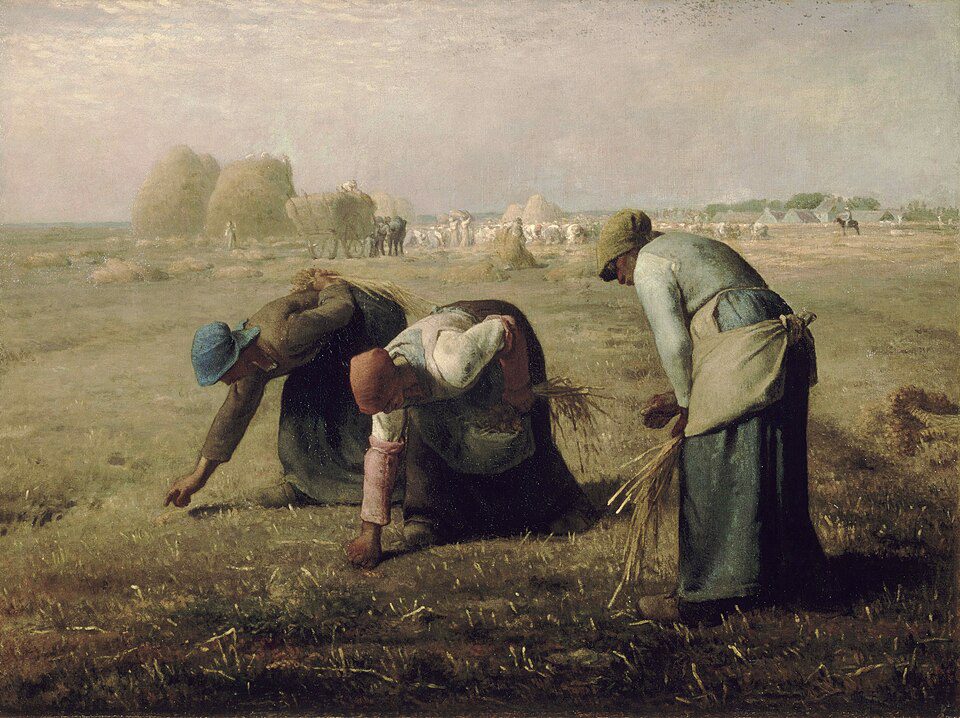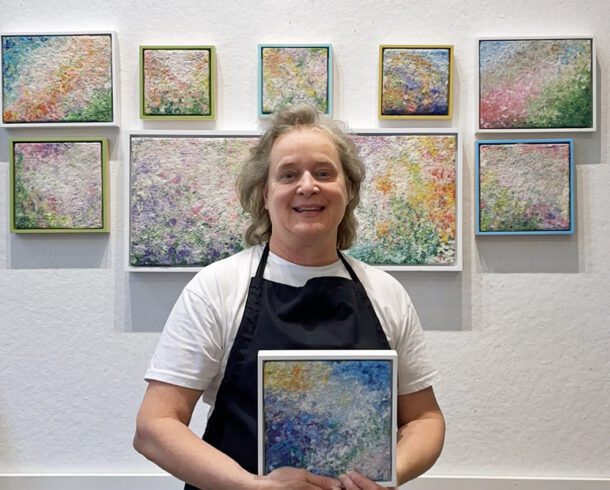Jean-François Millet’s painting features three gleaners (rural women who gathered the scraps of wheat left over from the harvest). In the distance, a bevy of farmers, both men and women, harvest the best wheat for themselves. Some stand idly by their overflowing wagons. The overseer, sitting astride his horse, pays no attention to the three women.
In the foreground, the women work in a solitary way. Their bodies are bent over so that they are below the horizon line, connected to the landscape. The wagons full of wheat the size of trees are lined up in the distance behind them. What little grain the women have collected is evident in the pouches tied to their waists. Despite their poverty, they are dressed neatly, and their bodies appear strong, yet one imagines their destitution.
As poor women (widows?), they are not welcomed into the group of farmers. They make do with what is left over to feed their families on the scraps that have fallen from the wagons.
Millet, whose concern for the working poor is evident in the painting, depicts these women as monumental figures despite their poverty.
The painting was poorly received at the Paris Salon that same year; city people apparently found images of the rural poor an unsettling topic for a painting.


